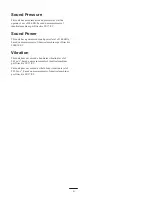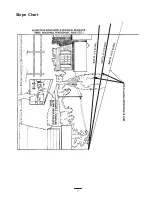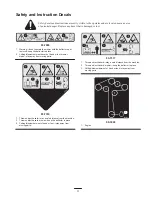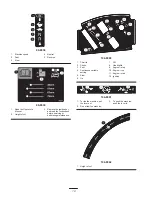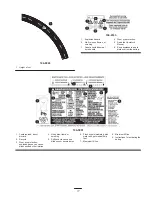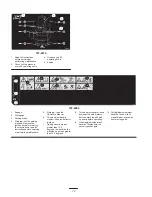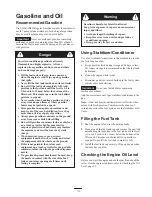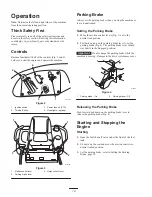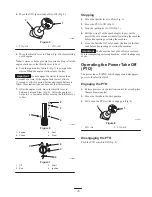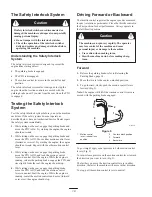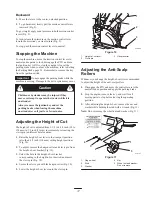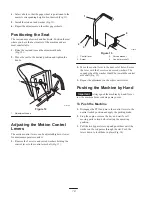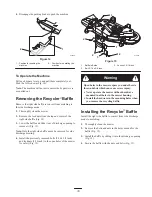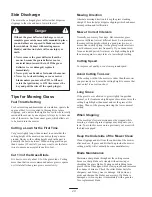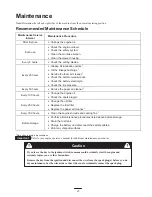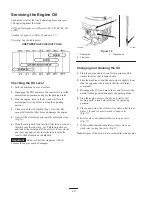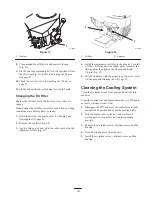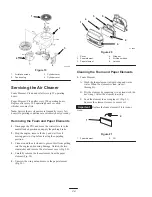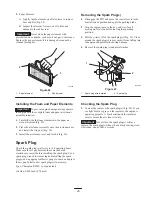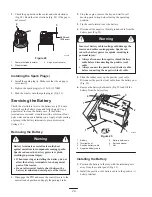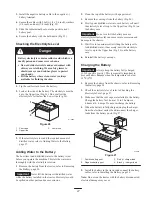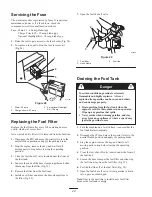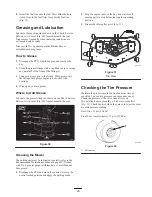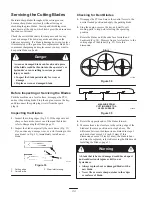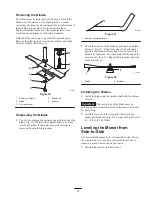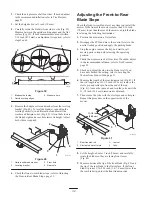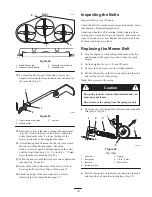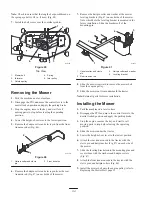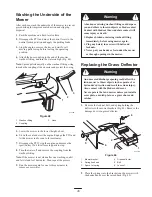
20
Side Discharge
The mower has a hinged grass deflector that disperses
clippings to the side and down toward the turf.
Danger
Without the grass deflector, discharge cover, or
complete grass catcher assembly mounted in place,
you and others are exposed to blade contact and
thrown debris. Contact with rotating mower
blade(s) and thrown debris will cause injury or
death.
•
Never remove the grass deflector from the
mower because the grass deflector routes
material down toward the turf. If the grass
deflector is ever damaged, replace it
immediately.
•
Never put your hands or feet under the mower.
•
Never try to clear discharge area or mower
blades unless you move the PTO to Off and
rotate the ignition key to Off. Also remove the
key and pull the wire off the spark plug(s).
Tips for Mowing Grass
Fast Throttle Setting
For best mowing and maximum air circulation, operate the
engine at Fast. Air is required to thoroughly cut grass
clippings, so do not set the height-of-cut so low as to totally
surround the mower by uncut grass. Always try to have one
side of the mower free from uncut grass, which allows air
to be drawn into the mower.
Cutting a Lawn for the First Time
Cut grass slightly longer than normal to ensure that the
cutting height of the mower does not scalp any uneven
ground. However, the cutting height used in the past is
generally the best one to use. When cutting grass longer
than 6 inches (15 cm) tall, you may want to cut the lawn
twice to ensure an acceptable quality of cut.
Cut 1/3 of the Grass Blade
It is best to cut only about 1/3 of the grass blade. Cutting
more than that is not recommended unless grass is sparse,
or it is late fall when grass grows more slowly.
Mowing Direction
Alternate mowing direction to keep the grass standing
straight. This also helps disperse clippings which enhances
decomposition and fertilization.
Mow at Correct Intervals
Normally, mow every four days. But remember, grass
grows at different rates at different times. So to maintain
the same cutting height, which is a good practice, mow
more often in early spring. As the grass growth rate slows
in mid summer, mow less frequently. If you cannot mow
for an extended period, first mow at a high cutting height;
then mow again two days later at a lower height setting.
Cutting Speed
To improve cut quality, use a slower ground speed.
Avoid Cutting Too Low
If the cutting width of the mower is wider than the mower
you previously used, raise the cutting height to ensure that
uneven turf is not cut too short.
Long Grass
If the grass is ever allowed to grow slightly longer than
normal, or if it contains a high degree of moisture, raise the
cutting height higher than usual and cut the grass at this
setting. Then cut the grass again using the lower, normal
setting.
When Stopping
If the machine’s forward motion must be stopped while
mowing, a clump of grass clippings may drop onto your
lawn. To avoid this, move onto a previously cut area with
the blades engaged.
Keep the Underside of the Mower Clean
Clean clippings and dirt from the underside of the mower
after each use. If grass and dirt build up inside the mower,
cutting quality will eventually become unsatisfactory.
Blade Maintenance
Maintain a sharp blade throughout the cutting season
because a sharp blade cuts cleanly without tearing or
shredding the grass blades. Tearing and shredding turns
grass brown at the edges, which slows growth and increases
the chance of disease. Check the cutter blades daily for
sharpness, and for any wear or damage. File down any
nicks and sharpen the blades as necessary. If a blade is
damaged or worn, replace it immediately with a genuine
Toro replacement blade.
Summary of Contents for 18-52ZX TimeCutter
Page 7: ...7 Slope Chart ...
Page 8: ...8 ...

